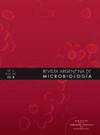盐酸氨溴索抗生物膜化合物的拓宽性质。
IF 2.1
4区 生物学
Q4 MICROBIOLOGY
引用次数: 0
摘要
生物膜相关微生物可引起许多感染,并且是对几种抗菌素产生耐药性的重要原因。抗生素危机导致迫切需要新的治疗工具。氨溴索常用于黏液增多的呼吸道疾病的解黏液剂。此外,还描述了广泛的特性,包括对生物膜的影响。在这项工作中,我们评估了氨溴索对四种具有临床意义的菌株的抗生物膜作用:奇异变形杆菌、大肠杆菌、金黄色葡萄球菌和鲍曼不动杆菌。在体外,用结晶紫定量技术在微孔板和玻璃盖盖上评估生物膜的形成。初步考察了氨溴索对生物膜形成的抑制作用。用预成型生物膜对盐酸氨溴索进行评价,并对活菌/死菌进行定量。分析了氨溴索在溴化乙啶外排试验中的作用,并分析了5个主要奇异假单胞菌外排泵家族基因的相对表达。氨溴索抑制所有细菌的生物膜形成。此外,氨溴索显著降低生物膜生物量和活菌。氨溴索能够根据使用的浓度影响P. mirabilis外排泵,并诱导几个外排泵基因的过表达。总之,氨溴索杀死浮游细胞,减少生物膜生物量,因为它增加细胞死亡,并影响外排泵的表达。此外,它为单独或与抗生素治疗联合治疗生物膜感染提供了可行的替代方案。本文章由计算机程序翻译,如有差异,请以英文原文为准。
Broaden properties of ambroxol hydrochloride as an antibiofilm compound
Biofilm-associated microorganisms can cause many infections and are an important cause of resistance to several antimicrobials. The antibiotic crisis has led to a pressing need for new therapeutic tools. Ambroxol is frequently used as a mucolytic agent in respiratory diseases with increased mucus production. In addition, a wide range of properties has been described, including the effect on biofilms. In this work, we evaluate the anti-biofilm effect of ambroxol on four strains with clinical relevance: Proteus mirabilis, Escherichia coli, Staphylococcus aureus, and Acinetobacter baumannii. In vitro, biofilm formation was assessed using the crystal violet quantification technique in microplate and glass coverslip. The inhibition of biofilm formation was evaluated by adding ambroxol at the initial time. Ambroxol hydrochloride was evaluated over the preformed biofilm and live/dead bacteria were quantified. The effect of ambroxol in the ethidium bromide efflux assay and the relative expression of the five major P. mirabilis efflux pump family genes were analyzed. Ambroxol inhibited biofilm formation in all the bacteria tested. Moreover, ambroxol significantly reduces both biofilm biomass and viable bacteria. Ambroxol was able to affect P. mirabilis efflux pumps depending on the concentration used and induced the overexpression of several efflux pump genes. In summary, ambroxol kills planktonic cells, reduce biofilm biomass as it increases cell death, and affect the expression of efflux pumps. Furthermore, it presents a viable alternative for the treatment of biofilm infection alone or in combination with antibiotic therapy.
求助全文
通过发布文献求助,成功后即可免费获取论文全文。
去求助
来源期刊

Revista Argentina de microbiologia
MICROBIOLOGY-
CiteScore
3.30
自引率
0.00%
发文量
46
审稿时长
>12 weeks
期刊介绍:
La Revista Argentina de Microbiología es una publicación trimestral editada por la Asociación Argentina de Microbiología y destinada a la difusión de trabajos científicos en las distintas áreas de la Microbiología. La Asociación Argentina de Microbiología se reserva los derechos de propiedad y reproducción del material aceptado y publicado.
 求助内容:
求助内容: 应助结果提醒方式:
应助结果提醒方式:


